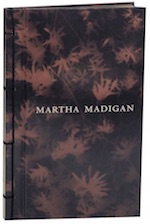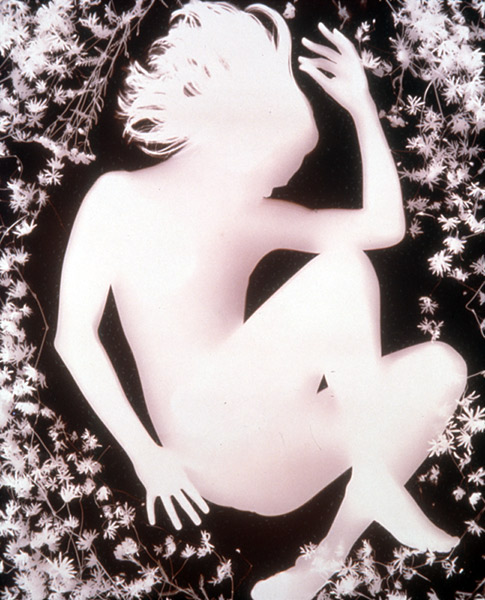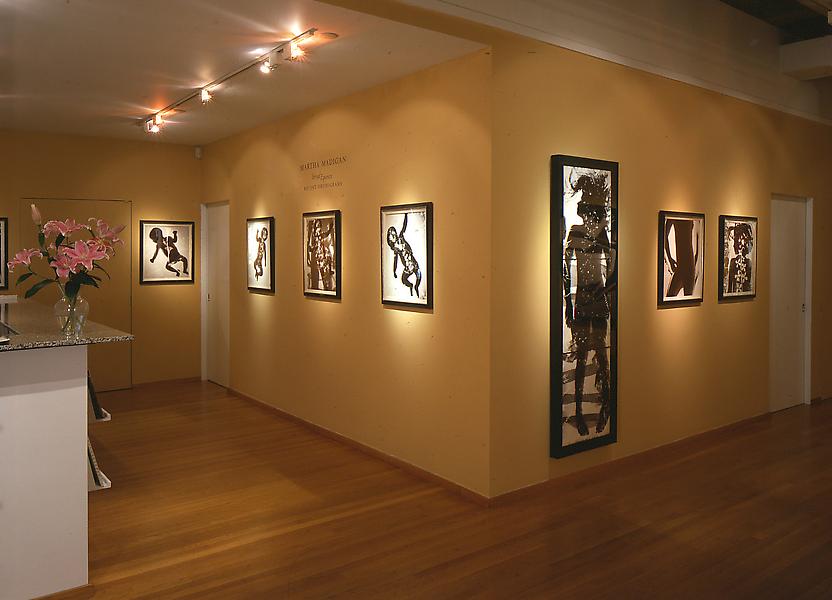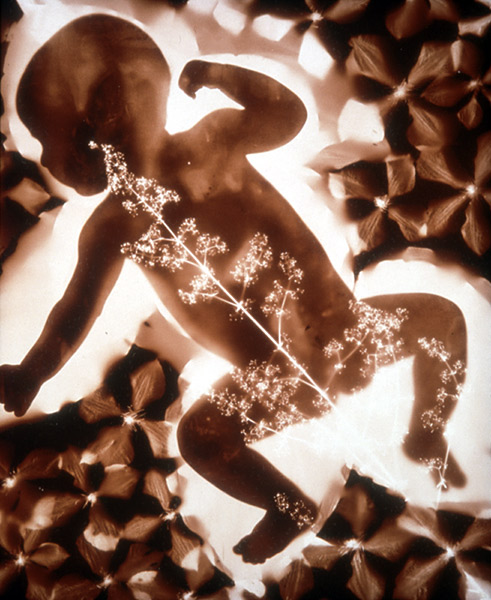 [Photographer and teacher Martha Madigan died on September 7, 2022. For her obituary in the Philadelphia Inquirer, click here.
[Photographer and teacher Martha Madigan died on September 7, 2022. For her obituary in the Philadelphia Inquirer, click here.
I can’t recall where I first met Madigan — certainly decades ago, and quite possibly at some regional or national conference of the Society for Photographic Education. In 1995 I reviewed an exhibition of her work at the Michael Rosenfeld Gallery in New York City. In 1998, and again in 2002, she invited me to teach the graduate seminar in photography at the Tyler School of Art, where she was on a semester’s sabbatical. During that time, courtesy of Madigan and her husband Jeffrey Fuller, I also offered an evening seminar in criticism for teachers at her Philadelphia studio. Madigan participated in the sessions, and we got to know each other better during those months.

Martha Madigan, Vernal Equinox (2001), cover
The Michael Rosenfeld Gallery commissioned this essay for the catalogue accompanying the exhibition “Vernal Equinox: Martha Madigan, Recent Photograms,” which ran from May 9 through June 30, 2001. (Copies are still available through the gallery’s website.)
The British journal Ag: International Journal of Photographic Art & Practice republished this essay, accompanied by a portfolio of Madifgan’s images, in its Fall 2006 issue. It also appears online at Madigan’s website, where you’ll find an extensive selection of her works, biographical information, and much more. I thought that republishing it here would bring it — and her work — to the attention of some new readers, and commemorate her passing.
You’ll find part 2 below. Click here for Part 1. — A.D.C.]
•
“Crossing the ocean of worldliness”:
The Solar Photograms of Martha Madigan (cont’d)
… That led her to leave cyanotype behind for printing-out paper (which, because it’s commercially available, involves no chemical preparation and greatly simplifies production of the prints), and also to establish more logistically feasible working situations and subject matter. “Instead of photogramming directly out of nature … I wanted to see what would happen if I constructed images myself, in a completely imaginary way,” Madigan says. Since then, with the exception of a few grants and commissions that have involved other methods and other people,[1] she’s worked exclusively with printing-out paper for the original photograms and with what one might call her “home team” — her husband Jeffrey Fuller, their children Daniel, Claire, and Grace, and a few other friends and family members — as her human subjects.
1983-84 saw the commencement of several photogram series Madigan refers to as “Leaf Drawings,” whimsical, imaginative pieces wherein she created human and animal forms from arrangements of leaves and grasses, organizing them into narrative scenarios, in a few cases incorporating text. (One set of these — “A*Leaf*Abet,” an ABC book and bestiary based on a Shaker poem — Madigan worked on for ten years and still hopes eventually to finish and to publish.) Those projects, in turn, led her to the ongoing work-in-progress in which the present exhibit stands as the most recent chapter, a lengthy suite that bears the working title “Human Nature.”
“One of the things that I’m working toward is photogramming every age of the human species, from newborn to age 100,” Madigan explains. “I love things that are impossible — that people tell you you can’t do. It took me nine years to get the babies, but I got them.” Presently she is working on filling one gap in the early stages — from six months to three years old — and contemplating how she can achieve her representation of the other ages still missing from the sequence. By her own estimate, she is “more than midway — I’m two-thirds” through this magnum opus. As this latest installment suggests, the cumulative work, when she completes it, will be monumental in scope and scale, and will represent a new stage in the development of the photogram as an expressive vehicle.
•
The rewards these current works deliver, in and of themselves, are considerable. Their titles refer us to Greek and Roman mythology; the deities they evoke rule over the elemental forces that govern our existence — birth, death, youth, fertility, the seasons, and healing. They are at once peaceful and vibrant — radiant, ecstatic, Edenic visions exemplifying a sumptuous, at times delirious pantheism. Many of them pulsate with energy, and suggest the fecund abundance of nature and what Dylan Thomas called “the force that through the green fuse drives the flower” as present in all living things.
One commentator has pointed to a relationship with the baroque in this work’s “accentuat[ing of] the broken, the disorderly, and the bizarre” and its “multiple, complex layering”;[2] it also contains strong elements of the grotesque, in the traditional meaning of the term — Madigan’s biomorphic merging of human and plant forms fit exactly with the Roman grotto fantasies from which that term derives. Looking at them, I find myself thinking of Charles Kingsley’s classic children’s story, Water Babies, and Pavel Tchelitchew’s masterpiece, “Hide and Seek” — and, curiously, the heroine of Leonard Cohen’s bittersweet song “Suzanne,” who “takes your hand/ And she leads you to the river … / [S]he shows you where to look/ Among the garbage and the flowers/ There are heroes in the seaweed/ There are children in the morning/ They are leaning out for love/ And they will lean that way forever/ While Suzanne holds the mirror … “[3]
Yet, for all their frequent tranquility, they can also evoke, as Charles Hagen proposed, “the shadows of victims etched on the sidewalks of Hiroshima by the heat and glare of the atomic bomb, or the charred figures caught attempting to flee the destruction of Pompeii.”[4] Sometimes the people who inhabit them appear to dance or even fly, but in other cases they have a funereal aspect, as in “Entombed,” or give the impression of confinement, as if struggling to fight their way out of some restricting enclosure. It’s not coincidental that Umbria, goddess of shadows and secrecy, appears here as well, along with Proserpina, the queen of the dead, and Nephtys, the night. Madigan’s work gives voice to the full spectrum of possible response to the world as we find it, from joy to awe to dread.
•
As that suggests, these images allow, in fact encourage, a wide variety of responses. Indeed, Hagen also noted, “What distinguishes [them] … is their openness to a seemingly endless process of interpretation despite their limited range of elements. Using relatively simple means Madigan creates images that demand to be read, while at the same time denying the exclusivity of any one reading.”[5] Perhaps that is because, in addition to her philosophical ruminations, the sources of these images and their range of references are wide — so much so that Madigan hesitates to specify any in particular. “I feel a connection with almost every artist who’s ever lived,” she asserts. “You couldn’t name a photographer that I haven’t been connected to, influenced by, interested in, in some way or another.”
Her list of artists whose work has nourished her “seems almost indiscriminate,” she suggests, running as it does the gamut from Lewis Hine — “who looks to be a completely different kind of image-maker,” she laughs — on to László Moholy-Nagy and Alfred Stieglitz. Outside of photography, Madigan’s influences include such sculptors as Bernini and Canova, along with painters as different as Georgia O’Keeffe, Mark Rothko, Vermeer, and Arcimboldo. Yet the work resembles none of those predecessors; it remains unmistakeably hers.[6]
And, regardless of which direction one’s interpretation takes, I think most viewers would agree with Madigan, who says of them, “Even when I look at a photogram five years after I made it, it looks alive … there’s something about the energy of the actual person in real time, and the sun, that you can’t get any other way.”
•
Shortly before she and Jeffrey Fuller (“my then-boyfriend, now-husband”) left Chicago, Madigan began a photographic project that incorporates many of her concerns — photographic, personal, and philosophical — and that, though not part of her work with the photogram, runs parallel to it and demands consideration in relation to it. Named “Daily Portrait,” it’s an ongoing documentation of her family that now stretches over a twenty-three year period and has recently crossed into a new century and a new millennium. “‘Daily Portrait’ began in 1978 with photographs that formed a dialogue between Jeffrey Fuller, myself, and a beech tree on the shore of Lake Michigan,” Madigan writes. With the birth of their three children, the project “shifted: it is now … an experience of their singular lives as well as a record of their developing relationships. … ‘Daily Portrait’ makes a cyclic journey tangible through the photographs as evidence. … [It ] is an attempt to touch the Absolute through constant change.”[7]
She has shown this work from time to time,[8] installing the images in chronological grids and spirals on the wall, and accompanying them with floor pieces involving spirals of the children’s worn-out and outgrown shoes, all of which she’s saved. This open-ended, longitudinal project continues even now, presently concentrating on her two daughters, with her son included whenever he is home from college; Madigan does not foresee it concluding before the girls leave home.
Those core issues — the brevity of life,[9] the spiral of time, the constancy of change, the cyclic aspects of history and human experience, and the enduring, unbreakable connection between humans and the natural world — weave constantly through Madigan’s commentary on her own work and working method, and make themselves apparent in the work itself. So does its spiritual underpinning. Madigan finds the link between her work and the sun as a generative source especially resonant, because she feels a deep connection to eastern religion — in which the sun figures prominently — as a result of reading The Upanishads in an undergraduate course on comparative religion. These ancient Vedic writings, the core of Hindu theology, connect the individual soul or atman to the universal soul or Brahma.
Madigan’s unanticipated encounter with these texts at the age of eighteen left her “completely blown away” and seeded her fascination with eastern thought. Subsequently, in 1981 in South Fallsburg, New York, she encountered Swami Muktananda, a meditation master. The meditation process she has learned from him and from his successor, Swami Chidvilasananda, has had “a huge impact on my life and on my children’s lives,” Madigan testifies, adding, “I think it’s definitely alive in the work.”
Martha Madigan’s comparatively low profile in the world of photography and photo-based art to date results from her prioritizing of other concerns: the complexity of the making of the work itself (she’s proven steadily prolific in that regard); her long-term professional commitment at Temple University’s Tyler School of Art, where she’s taught since 1979 and served as the photography department chair since 1989; and her deep, unswerving engagement with marriage and family. All of that leaves little time for attention to a public art career. “May my work be the boat that carries me safely down the relentless river of time into and across the ocean of worldliness,” she writes in her most recent artist’s statement, prepared to accompany this exhibit. She embarked on that voyage many years ago, and is now well on her way. The world will have to catch up with her, it seems. Perhaps it is ready to do so at last.
•
(Part 1 I 2)
Notes
[1] She’s accepted commissions for several public projects, including “Reach,” a piece that involved the homeless of Philadelphia’s Rittenhouse Square, and “Elements,” an elaborate, technically innovative three-dimensional construction on the theme of sports designed for the West Atrium of Philadelphia’s First Union Center (formerly CoreStates Center), which she produced in 1996. Both took her well away from her usual working methods. By contrast, a more recent commission, for the Temple University Children’s Hospital, relies on the imagery she normally produces.
[2] Curtis L. Carter, “Martha Madigan: Photographer of the Human Spirit,” in the catalogue Human Nature: Solar Photograms by Martha Madigan (Milwaukee: Haggerty Museum of Art, Marquette University, 1996), unpaginated.
[3] Leonard Cohen, “Suzanne,” 1968.
[4] Hagen, ibid.
[5] Charles Hagen, “Spirits Embodied,” in the catalogue Martha Madigan: Seeds of Light (New York: Michael Rosenfeld Gallery, 1997), unpaginated.
[6] One or two of them bear a slight resemblance to some recent photograms of infants by Adam Fuss, though (given the dates at which Madigan began her own explorations in comparison to those of Fuss) the influence, if any, more likely flows from her direction.
[7] Martha Madigan, “Martha Madigan — Daily Portrait,” artist’s statement, 1990. In conversation, she indicates that she produced a segment of this work using the SX-70 Polaroid, but once she discovered the inherent instability of the Polaroid materials she elected to work with 35-mm. color film instead.
[8] Forinstance, at the Snug Harbor Cultural Center on Staten Island in 1990.
[9] Reportedly, she has accumulated an extensive archive of snapshot photographs of snowmen — those curious, iconic, ephemeral simulacra that live fleetingly, only to be dissolved by the sun.
•

Special offer: If you want me to either continue pursuing a particular subject or give you a break and (for one post) write on a topic — my choice — other than the current main story, make a donation of $50 via the PayPal widget below, indicating your preference in a note accompanying your donation. I’ll credit you as that new post’s sponsor, and link to a website of your choosing.
And, as a bonus, I’ll send you a signed copy of my new book, poetic license / poetic justice — published under my full name, Allan Douglass Coleman, which I use for my creative writing.










Thanks for the Martha note … she did a few SPE conferences for me .. and I think I may have introduced you two at one that took place in California …not quite sure .. but I remember saying “she does photograms”.. I was kind of proud that someone else was doing photograms … Ansel was always curious why I did demonstrations when I taught dye transfer workshops for the Friends, that were photograms ! Henry Holmes Smith would love that exchange if he were with us ! So would László Moholy-Nagy who hired Henry to teach this strange type of photography !
Again, thanks Martha was special, very sincere, and extremely filled with kindness